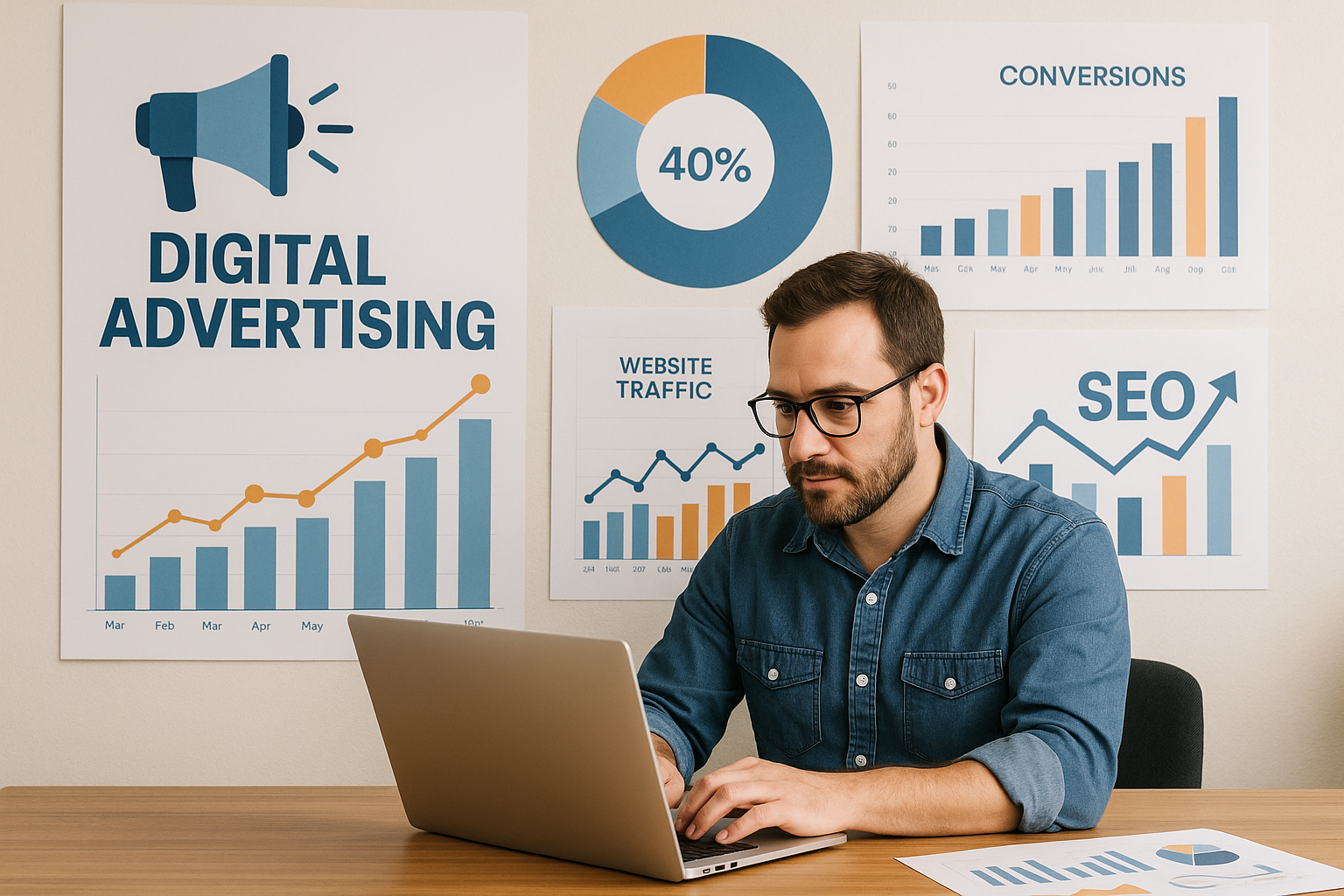Digital Advertising Strategies for Small Businesses





Navigating Digital Advertising as a Small Business Owner
Small businesses across the U.S. often feel overwhelmed by digital advertising. Hundreds of platforms, tools, and tactics can make it difficult to know where to begin or which investments will pay off. Limited budgets and time constraints make choosing the right approaches essential.
Digital advertising levels the playing field by offering targeted reach, measurable results, and the ability to connect with audiences actively searching for solutions.
Before diving in, review foundational terms at Marketing Terms for Beginners to simplify the strategy ahead.
This guide breaks down the most effective digital advertising strategies for small businesses. You’ll learn how to set goals, choose channels, craft compelling ads, and optimize campaigns for long-term success.
Understanding Effective Digital Advertising
Digital advertising promotes products or services via online platforms such as search engines, social networks, and display ad networks. Compared to traditional methods, digital channels allow precise targeting, rapid testing, and accurate measurement.
Effective strategies help small businesses stay visible, reach high-intent audiences, and reduce wasted spending—essential when budgets are limited. Even modest budgets can perform well if campaigns are optimized over time.
Explore examples of successful projects at Express Media Work or browse agency services at Express Media Services.
Top Digital Advertising Strategies for Small Businesses
1. Create Campaign Goals That Guide Progress
A strong strategy begins with clear goals. Define your target outcome—more leads, website traffic, purchases, calls, or bookings. Instead of vague objectives, use measurable goals like generating 30 leads per month or lowering cost per acquisition by 25%.
Establish KPIs such as CTR, CPC, CPL, or ROAS to track performance.
Pro Tip: Choose one main goal per campaign to keep your budget and optimization focused.
2. Choose Channels That Maximize ROI
Select platforms that reach your ideal customers and prevent spreading your budget thin.
- Google Ads: Capture high-intent search traffic
- Facebook & Instagram Ads: Visual storytelling and interest-based targeting
- LinkedIn Ads: Ideal for B2B businesses
- YouTube Ads: Best for video content
Start with one or two primary channels, then expand after achieving consistent success.
Pro Tip: Retargeting on Google or Facebook brings back visitors who didn’t convert.
3. Build Messages That Drive Engagement
Great ads address customer pain points while showing clear benefits. Use simple language, strong visuals, and customer-focused headlines. Test multiple versions to identify what resonates.
Social media insights at Sprout Social or scheduling strategies at Hootsuite can help refine messaging.
Pro Tip: Keep copy short, clear, and emotionally compelling.
4. Set Budgets That Support Results
Budgets should be meaningful enough for data gathering but affordable.
- Google Ads: $10–$20/day for beginners
- Social Ads: $5–$10/day can perform well
Increase budgets gradually after identifying winning campaigns.
Pro Tip: Avoid starting too high; incremental increases reduce risk.
5. Optimize Campaigns Through Continuous Testing
Ongoing optimization is key. Review ads weekly, test headlines, visuals, and audiences, and track performance trends.
Pro Tip: Change one variable at a time to know exactly what impacts results.
Practical Applications of These Strategies
Local Service Provider:
A plumbing business used Google Ads for urgent keywords, optimized its landing page, and reduced cost per lead by 40%.
Boutique Retail Shop:
Instagram Ads showcasing new arrivals doubled monthly sales while staying within a modest budget.
B2B Consulting Firm:
LinkedIn Ads and case-study content connected the firm with decision-makers and shortened the sales cycle.
See client results at Express Media Clients.
Best Practices and Common Mistakes
- Start with one primary channel before expanding
- Use clear, benefit-driven messaging
- Refresh creative regularly every 4–6 weeks
- Track performance weekly to avoid wasted spend
- Align landing pages with ads to boost conversions
Final Takeaways
Digital advertising enables small businesses to grow competitively. By setting goals, choosing the right channels, crafting compelling ads, and continuously optimizing, even modest budgets can yield strong results.
Start small, test often, and scale what works. Consistency turns campaigns into predictable, profitable marketing tools.
Explore services and real project results at Express Media Work and Express Media Services.
Frequently Asked Questions
What is the most effective digital advertising strategy for small businesses?
Google Search Ads often deliver the strongest results for service-based businesses, capturing high-intent searches.
How much should a small business spend on digital advertising?
Most start with $300–$1,000/month. Start small, refine, then scale.
Can digital advertising work with a small budget?
Yes. Strategic targeting and ongoing testing maximize ROI even with limited funds.
Which platform is best for small business advertising?
Google for intent-based traffic, Facebook/Instagram for visuals, LinkedIn for B2B.
How can I improve ROI on digital ads?
Test creative, refine targeting, and ensure landing pages match ad messaging.








